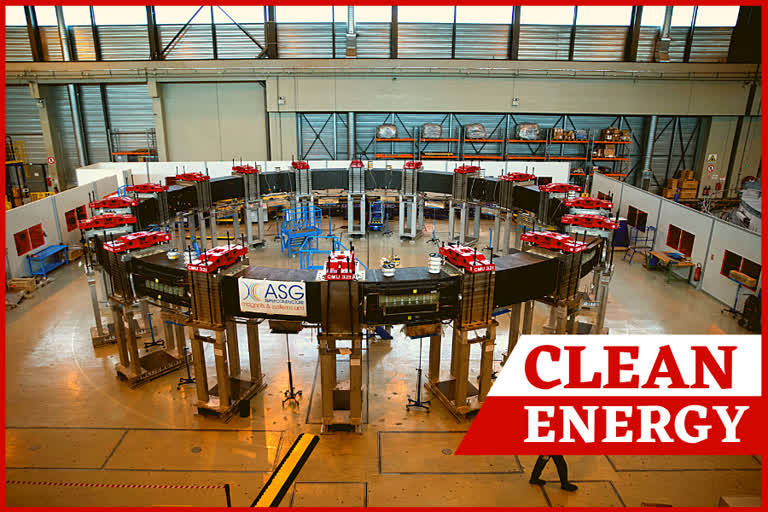Paris: A hugely ambitious project to replicate the energy of the sun is entering a critical phase, as scientists and technicians in southern France begin assembling huge parts of a nuclear fusion device, an international experiment aimed to develop the ultimate clean energy source.
"Clearly, the pandemic impacted the initial schedule," said ITER's director-general, Bernard Bigot, who led the ceremony at Saint-Paul-les-Durance, northeast of Marseille. He said none of the on-the-ground staff has contracted COVID-19.
Scientists have long sought to mimic the process of nuclear fusion that occurs inside the sun, arguing that it could provide an almost limitless source of cheap, safe and clean electricity. Unlike in existing fission reactors, which split plutonium or uranium atoms, there's no risk of an uncontrolled chain reaction with fusion and it doesn't produce long-lived radioactive waste.
Read also: Forest fire at Chernobyl put out after 10 days: Ukrainian officials
French President Emmanuel Macron hailed ITER as a "promise of peace" because it brings together countries that decided to forego differences for the "common good." China, the US, India, Russia, South Korea and nations of the European Union are taking part in the project.
Bigot compared the milestone phase getting underway as akin to assembling a giant, three-dimensional puzzle that "must (have) the precision of a Swiss watch."
Billed as the world's largest science project, ITER is gigantic. The circular device, called a Tokamak, with a 30-meter circumference and standing 30 meters (100 feet) high, is made up of more than a million parts constructed in several countries.
Read also: Former German nuke plant towers demolished
Some pieces transported to France weigh several hundred tons. Tools to put the reactor together match that size, with giant lifts that must transfer components over the walls and down into "the pit." A key component being built by the United States, the Central Solenoid, is the most powerful of ITER's numerous magnets. Together, they will be strong enough to lift an aircraft carrier.
The project begun in 2006 is far from over. The experimental reactor will be functional five years from now, a landmark moment when scientists launch what is called "First Plasma" to show that the reactor functions.
The estimated budget for the European Union is about 20 billion euros (some $23.5 billion), Bigot told reporters. He said an overall price tag is difficult to estimate because participating countries make their own contributions.
AP



